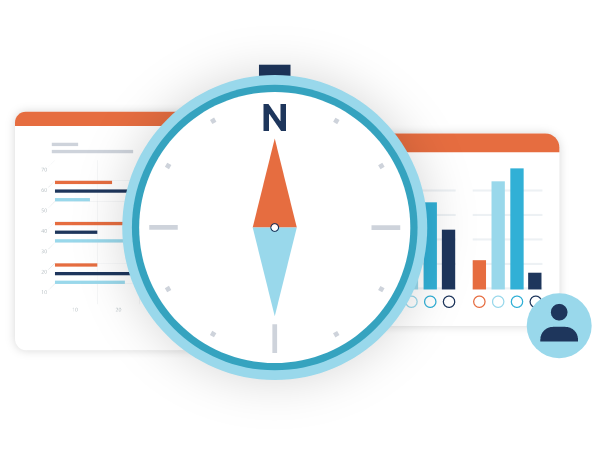

Schedule your initial Five Dysfunctions of a Team Dialogue
Unleash the true potential of your team.
For leaders and teams willing to do the hard work, get vulnerable, engage in conflict, truly commit, engage in interpersonal accountability and focus on results, The Five Dysfunctions of a Team Workshop can open the door to sustained team performance.
“Great teams do not hold back with one another. They are unafraid to air their dirty laundry. They admit their mistakes, their weaknesses, and their concerns without fear of reprisal.“
– Patrick Lencioni. The Advantage

STRENGTHEN YOUR TEAM BY ELIMINATING THE 5 DYSFUNCTIONS OF A TEAM
Fact: Team dysfunctions never sort themselves out.
Team dysfunctions end up costing teams and organizations incredible amounts of wasted time, energy, and resources. And while these costs are often difficult to quantify, the costs of missed opportunity, reduced employee morale, and unnecessary turnover are truly staggering.
Fact: Teams that do not effectively work together lose more often.
High-performing teams face their dysfunctions head-on. High-performing teams realize they must slow down to speed up by doing the necessary work together on an ongoing basis to ensure they are truly maximizing their potential.
Commit to Improving Your Team’s Focus
If you truly intend to unleash your team’s potential, you and every single team member must commit to waging an all-out war against team dysfunction.
The time is now. Right now is the ideal time to change individual and collective mindsets regarding one another and how your team works together.
About The Five Dysfunctions of a Team Workshop and Training Program
The last thing you and your team need is another experiential training activity where everyone comes together and has a shared experience, learns something new, and hopes get raised– only for old habits to return within a few days or weeks.
This is where cynicism is born.
After almost 15 years of facilitating The Five Dysfunctions of a Team Workshop, we have learned a thing or two about the best practices essential to making this experience meaningful and sticky. A key ingredient to our “secret sauce” is our diagnostic stack coupled with experienced facilitators.
We fervently believe what gets measured gets improved. Accordingly, we begin by having team members complete Patrick Lencioni’s online Team Assessment Report (TAR) anonymously to identify precisely where your team can improve. We also use the powerful psychometric assessment, the TriMetrix® HD, to accurately measure each team member’s Behavioral Style and Driving Forces (Motivators). This robust assessment stack helps improve self and interpersonal awareness during and long after the workshop.
You can trust that your facilitator is an expert in The Five Dysfunctions of a team as well as the TriMetrix® HD.
We also situationally deploy leadership, Emotional Intelligence (EQ), and Culture Scan assessments to diagnose your team’s current state properly.

About The Five Dysfunctions of a Team Model
Patrick Lencioni’s The Five Dysfunctions of a Team Model is elegantly simple yet powerful. We believe The Five Dysfunctions of a Team to be a “universal truth.”
The “base” or “foundation” of Lencioni’s Five Dysfunctions of a Team Model is Trust. Without Trust, it is difficult to impossible for Conflict to occur properly. Without proper Conflict, genuine Commitment is nearly impossible. A lack of Commitment translates into avoidance of Accountability. When Teams avoid Accountability, they will not fully achieve Results.
EACH DYSFUNCTION IS SHARED MORE FORMALLY FOLLOWING:
- Absence of Trust: Unwilling to be vulnerable within the group.
- Fear of Conflict: Seeking artificial harmony instead of constructive, passionate debate.
- Lack of Commitment: Pretending buy-in for group decisions leads to ambiguity throughout the team and organization.
- Avoidance of Accountability: Dodging responsibility to call peers and superiors on unproductive behavior, leading to low standards.
- Inattention to Results: The focus is on personal success, ambitions, status, and ego ahead of team success.
Where is your team strong? Where are your team’s growth opportunities? Blind spots? Are you and your team ready to do the challenging yet rewarding work necessary to reach new heights?
Ten Essentials to Maximizing Your Team’s Five Dysfunctions of a Team Workshop Experience and Results.
Your team is listening to you. They are watching you. They are hoping to make a real, positive change that lasts. Your team needs your commitment. When you commit, they will as well. Your team wants to reach new heights doing their best work with people they admire, respect, and love.
Your team wants a leader to challenge them to help with the heavy lifting.
Murphy’s Law of Self Facilitation suggests an inverse relationship between the stakes and how well it will go. Self-facilitation of The Five Dysfunctions of a Team will either go well or will not. And no one will forget when it goes poorly.
Look. Done properly, The Five Dysfunctions of a Team requires heavy, emotional lifting. Quite frankly, it is downright awkward to be a team member and a facilitator trying to set up the deep dialogue necessary to succeed in this endeavor. Not recommended.
Furthermore, a professional facilitator who is a disinterested, third party is just that – a disinterested, third party. They get to go home afterward.
While no one can say they have seen everything, a professional Five Dysfunctions of a Team Facilitator can help your team get the best results by going places you are unlikely to go on your own.
We are a proud member of Patrick Lencioni’s professional affiliate network CAPAPRO.
There are innumerable assessment tools available in the marketplace, and while some are quite accurate, some are less accurate, and nearly all are not particularly deep. Most assessments suggest they “measure” some form of Behavioral Style. Even when done well, measuring just one’s Behavioral Style is an excellent place to begin, yet there is so much more to what makes a person “tick.”
The key to maximizing self and interpersonal awareness is using an assessment instrument that is comprehensive, objective, valid and accurate. We recommend the TriMetrix® HD.
“Whatever is worth doing at all is worth doing well.”
Those words were penned by Philip Stanhope, 4th Earl of Chesterfield, in a letter to his son back in 1774.
Patrick Lencioni’s online second-generation Team Assessment is a powerful way to benchmark where your team is right now anonymously.
Chances are, areas you believe your team could improve in may actually be a strength, and areas you think your team is strong are actually a growth opportunity.
The Team Assessment will accurately identify what to work on first as well as your team’s blind spots. It saves valuable time and keeps team members engaged in the dialogue.
We recommend periodically re-assessing your team to identify areas that have improved and growth opportunities, like a good physical. What gets measured gets improved.
We have observed, time after time, the disconnect between what leadership believes the culture of a team and organization to be and what it actually is.
Sorry. Your team culture is probably not what you hope or say it to be. That is unless you have measured it using our Culture Scan to identify individual and collective values, as well as the current and desired culture.
The Five Dysfunctions of a Team Workshop takes two to three days when done properly. A crucial factor in length is the size of your team. And in case you are wondering if you should invest the time to do this right, re-read number one from this list.
Take the time to do this right.
Repetition and continuing dialogues are the motors of learning and stickiness.If you do not take the time, your team will go back to old habits. Old habits die hard.
Your team’s playbook should contain a copy of their Team Assessment Report, Communication Do’s and Don’ts of each team member, and Meeting and Conflict Norms.
Everyone must bring a copy to every meeting.
Sorry. This program is not one and done.
One must periodically slow down to speed up. And the Five Dysfunctions of a Team is a powerful way to do so effectively.
In today’s hectic environment of working smarter not harder, and doing more with less, you and your team must invest in follow-up sessions to continue working on how your team engages one another.
Team members do what their leaders do. Model the way. Become an expert regarding the Five Dysfunctions of a Team storyline as well as the lessons illustrated.
Talk about The Five Dysfunctions of a Team Model with your staff. Expect them to read it as well.
And then continue talking about The Five Dysfunctions of a Team. And when your team is mouthing the very words you speak – continue talking about it.
The stakes are high. This is too important to not get right.
The 5 Dysfunctions of a Team - 12 Step Guide
Like it or not, all teams are dysfunctional to some degree. This is inevitable because teams are comprised of fallible, imperfect human beings. From the basketball court to the executive suite, politics and confusion are more the rule than the exception. However, facing dysfunction and focusing on teamwork is particularly critical at the top of an organization because the executive team sets the tone for how your people work with one another.
Download Now
THE RAINMAKER
Every great organizational change starts with a mindset shift. Start your journey with thought-provoking articles on People, Leadership, Teams, and Moats.